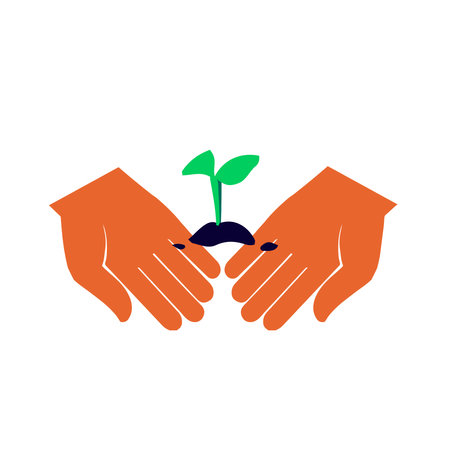1. Introduction to Edible Landscapes and Pollinators
Edible landscapes are a growing trend in American gardening that combine beauty with function. Instead of planting only ornamental plants, gardeners are choosing fruits, vegetables, herbs, and edible flowers to create attractive spaces that also produce food. This approach not only makes the most out of your yard, but it also supports sustainability and healthier lifestyles by encouraging homegrown produce.
One of the key elements that make edible landscapes successful is the presence of pollinators. Bees, butterflies, hummingbirds, and other pollinating creatures play an essential role in helping plants produce fruit. Without them, many of the crops we rely on—like tomatoes, squash, apples, and berries—would struggle to yield a good harvest.
Pollination happens when pollen is transferred from one flower to another, allowing plants to reproduce. While some plants can self-pollinate or rely on wind, many fruits and vegetables need help from pollinators. By inviting these helpful insects and birds into your garden through pollinator-friendly plants, you boost the productivity of your edible landscape.
How Pollinators Help Your Garden
Pollinators visit flowers in search of nectar and pollen for food. As they move from flower to flower, they carry pollen with them, which fertilizes the plants. This process leads to the formation of fruits and seeds.
Common Fruits and Vegetables That Rely on Pollinators
| Crop | Main Pollinator(s) | Pollination Type |
|---|---|---|
| Apples | Bees | Cross-pollination |
| Zucchini | Bees | Insect-pollinated |
| Blueberries | Bumblebees | Buzz pollination |
| Tomatoes | Bumblebees | Self + Buzz pollination |
| Cucumbers | Bees & Butterflies | Insect-pollinated |
Why This Matters for Home Gardeners
If youre growing your own food, understanding how pollinators work—and how to attract them—is vital. A lack of pollinator activity often results in fewer fruits or deformed vegetables. By designing your edible landscape with pollinator-friendly plants alongside your crops, youre creating a more balanced and productive garden environment. Plus, its a great way to support local biodiversity and enjoy watching nature at work right in your backyard.
2. Understanding Pollinator-Friendly Plants
Pollinator-friendly plants play a vital role in edible landscapes by supporting bees, butterflies, hummingbirds, and other beneficial creatures that help fruits and vegetables grow. These plants attract pollinators with their colors, scents, nectar, and pollen, making them essential companions in any garden focused on food production.
What Makes a Plant Pollinator-Friendly?
A pollinator-friendly plant typically has one or more of the following traits:
- Brightly colored flowers (especially blue, purple, yellow)
- Sweet fragrance to attract insects and birds
- Open or tubular-shaped blooms that are easy for pollinators to access
- Rich nectar or pollen sources
- Blooms at different times of the year to provide consistent food
Native vs. Adapted Plant Species
When choosing pollinator-friendly plants for an edible landscape in the U.S., its important to understand the difference between native and adapted species:
| Type | Description | Benefits |
|---|---|---|
| Native Plants | Species that naturally occur in a specific region of the U.S. | – Well-suited to local climate and soil – Support native pollinators – Low maintenance once established |
| Adapted Plants | Non-native but thrive in local conditions without becoming invasive | – Broaden plant choices – Provide additional food sources – Extend bloom season |
Ecological Benefits of Pollinator-Friendly Plants
Besides helping your fruits and vegetables flourish, these plants offer many environmental advantages:
- Biodiversity: They support a wide range of wildlife, not just pollinators.
- Pest Control: Some attract beneficial insects that prey on garden pests.
- Soil Health: Deep-rooted varieties help prevent erosion and improve soil structure.
- Sustainability: Reducing the need for chemical inputs by creating balanced ecosystems.
Quick Examples of Pollinator-Friendly Plants by Region (U.S.)
| Region | Native Plant Examples | Adapted Plant Examples |
|---|---|---|
| Northeast | Bee balm, New England aster | Lavender, borage |
| Southeast | Purple coneflower, black-eyed Susan | Zinnias, cosmos |
| Midwest | Milkweed, prairie clover | Coriander, oregano (allowed to flower) |
| Southwest | Palo verde, desert marigold | Sage, thyme (flowering varieties) |
| West Coast | California poppy, yarrow | Alyssum, calendula |
Selecting the right mix of native and adapted pollinator-friendly plants can make your edible landscape more productive and environmentally friendly. By understanding what attracts pollinators and how different plant types support your garden ecosystem, you’re setting up a thriving habitat that benefits both people and nature.
![]()
3. Benefits of Incorporating Pollinator Plants in Edible Gardens
Adding pollinator-friendly plants to your edible garden isn’t just about attracting bees and butterflies for the fun of it—though that’s a great bonus! These plants play an important role in boosting your gardens productivity and health. Here are some of the key benefits:
Increased Crop Yields
Pollinators like bees, butterflies, and even hummingbirds help transfer pollen from one flower to another. This process is essential for fruit and vegetable production in many crops. When your garden includes a variety of pollinator-friendly plants, you create a welcoming space that encourages these helpful visitors to stick around—and the more pollinators you have, the better your harvest can be.
Enhanced Biodiversity
Diverse gardens are healthier gardens. By planting a mix of flowers, herbs, and shrubs that attract pollinators, youre helping to support a wide range of insects and animals. This not only makes your garden more vibrant but also creates a mini-ecosystem where different species work together naturally.
Pest Control Benefits
Some pollinator plants also attract beneficial insects like ladybugs and lacewings that prey on common garden pests such as aphids and mites. This means you may be able to cut back on chemical pesticides and still keep harmful bugs under control.
Overall Garden Health Improvements
A well-balanced garden with pollinator plants tends to be more resilient against diseases and environmental stress. Healthy soil, fewer pests, and strong plant growth all come together when pollinators are part of the picture.
Quick Look: How Pollinator Plants Benefit Edible Gardens
| Benefit | Description |
|---|---|
| Higher Yields | More pollination means more fruits and veggies. |
| Biodiversity Boost | Supports a range of wildlife for a balanced ecosystem. |
| Pest Management | Attracts natural predators to harmful insects. |
| Improved Plant Health | Healthier plants due to better pollination and fewer pests. |
By weaving pollinator-friendly plants into your edible landscape, youre not just planting pretty flowers—you’re investing in the long-term success and sustainability of your garden.
4. Designing Pollinator-Friendly Edible Landscapes
Creating an edible landscape that supports pollinators not only helps your garden thrive, but also benefits local ecosystems. By combining fruits, vegetables, herbs, and flowers in a thoughtful layout, you can attract bees, butterflies, and other beneficial insects while growing fresh produce right in your backyard.
Smart Layout Tips for Home Gardens
To design a pollinator-friendly edible garden, think about how plants are arranged. Grouping plants with similar sun and water needs together makes care easier and encourages more efficient pollination. Use layers to mimic nature—taller plants like fruit trees or corn can provide shade for lower-growing herbs and greens.
Layout Ideas
| Garden Area | Suggested Plants | Pollinator Benefit |
|---|---|---|
| Sunny Borders | Lavender, basil, cherry tomatoes | Attracts bees and butterflies |
| Shady Corners | Mints, leafy greens, blueberries | Provides habitat for native bees |
| Pathway Edges | Thyme, oregano, marigolds | Nectar-rich herbs draw pollinators close to veggies |
Seasonal Planting Strategies
Aim to have something blooming throughout the growing season to keep pollinators coming back. Start with early-spring bloomers like crocus or borage, then transition into summer with zinnias and squash blossoms. In fall, let your herbs flower—especially mint and basil—to provide late-season nectar.
Example Seasonal Bloom Plan:
| Season | Plants in Bloom |
|---|---|
| Spring | Crocus, chives, strawberries |
| Summer | Zinnias, sunflowers, cucumbers |
| Fall | Basil (flowering), goldenrod, kale flowers |
Companion Planting Concepts
Companion planting is a great way to improve plant health and attract pollinators naturally. Pair flowering herbs like dill or cilantro with vegetables such as carrots or lettuce. Not only do they boost biodiversity, but they also help repel pests and draw in helpful insects.
Popular Companion Combos:
| Main Crop | Companion Plant | Benefit |
|---|---|---|
| Tomatoes | Basil, marigold | Enhances flavor; repels pests; attracts bees |
| Cucumbers | Dill, nasturtiums | Lures beneficial insects; improves yield through better pollination |
| Lettuce | Cilantro, chives | Adds visual interest; draws pollinators to nearby flowering crops |
A successful edible landscape blends beauty with function. By planning your layout carefully and including a variety of pollinator-attracting plants throughout the seasons—and by using smart companion planting techniques—you’ll create a garden that’s both productive and buzzing with life.
5. Challenges and Considerations
Creating an edible landscape that supports pollinators is a rewarding goal, but it does come with some challenges. Understanding these potential issues can help home gardeners make better choices and maintain a healthy, productive garden.
Plant-Pollinator Mismatches
Not all flowers attract all pollinators. Some plants may bloom at times when local pollinators are not active, or their flower shapes might not match the feeding habits of native bees or butterflies. To address this:
- Choose a variety of plants that bloom at different times throughout the growing season.
- Select native flowering plants that are known to attract local pollinators.
- Observe which pollinators are visiting your garden and adjust plant choices accordingly.
Invasive Species
Some plants marketed as “pollinator-friendly” may be invasive in certain parts of the U.S., threatening native ecosystems and competing with beneficial local species.
Heres how to avoid this issue:
- Research whether a plant is considered invasive in your region (check with local extension services or native plant societies).
- Prioritize native plants over exotic varieties whenever possible.
- Avoid “seed mixes” unless you know exactly what species are included.
Pesticide Use
Chemical pesticides can harm both pests and beneficial insects like bees, butterflies, and hoverflies. Even organic options can be risky if misused.
To protect pollinators in your edible landscape:
- Avoid using broad-spectrum pesticides, especially during blooming periods.
- If treatment is necessary, apply it early in the morning or late in the evening when pollinators are less active.
- Use integrated pest management (IPM) strategies, such as encouraging natural predators and removing pests by hand.
Quick Reference: Do’s and Don’ts for Pollinator-Friendly Edible Gardens
| Do | Dont |
|---|---|
| Plant native flowers with staggered bloom times | Rely solely on imported ornamental plants |
| Check for invasive status before planting | Use seed mixes without knowing contents |
| Apply pesticides only when absolutely needed | Spray chemicals while plants are in bloom |
| Create habitat areas like bee hotels or brush piles | Clear all “wild” areas that support wildlife |
Tackling these challenges thoughtfully will ensure that your edible landscape supports both your harvest and the health of local pollinators.
6. Engaging Communities and Supporting Local Pollinators
Creating a pollinator-friendly edible landscape isn’t just a solo effort—it can become a community-wide movement. By working together with neighbors, schools, and local organizations, homeowners can help expand pollinator habitats and raise awareness about the importance of bees, butterflies, and other beneficial insects in urban and suburban areas.
Partnering with Neighbors
Start small by talking to your neighbors about planting pollinator-friendly flowers and herbs. A single yard filled with blooms is helpful, but when several homes on a block plant with pollinators in mind, it creates a powerful corridor for bees and butterflies to travel through safely.
Ideas for Neighborhood Collaboration:
| Activity | Description |
|---|---|
| Pollinator Pathways | Create continuous stretches of flowering plants across multiple yards. |
| Seed Swaps | Exchange native wildflower or herb seeds that attract pollinators. |
| Community Garden Projects | Work together on garden plots that include both edible and pollinator-friendly plants. |
Involving Schools and Youth Groups
Schools are a great place to spread awareness and build future advocates for pollinators. Consider reaching out to teachers or parent groups to start school garden programs that highlight both food growing and pollinator support. Even small raised beds can make a big difference while teaching kids valuable lessons about nature and sustainability.
Ways Schools Can Participate:
- Create butterfly or bee gardens using native plants.
- Include garden-based learning in science or environmental studies curriculum.
- Host pollinator-themed art or science fairs to engage students creatively.
Working With Local Programs and Organizations
Many cities have local gardening clubs, master gardener programs, or nonprofit organizations focused on conservation. These groups often provide free resources like plant lists, workshops, or even grants for installing pollinator gardens. Participating in these programs can help you stay informed and connected with others who share your goals.
Resources to Explore:
| Organization Type | How They Help |
|---|---|
| Extension Services (e.g., USDA) | Offer expert advice on native plants and sustainable practices. |
| Local Conservation Groups | Provide volunteer opportunities and educational events about pollinators. |
| Parks & Recreation Departments | Might collaborate on public pollinator spaces or community gardens. |
The Power of Community Action
When communities come together to support pollinators, the benefits go beyond just prettier yards. These efforts help create resilient ecosystems, improve local food production through better pollination, and build stronger connections between people and nature. Whether its hosting a neighborhood planting day or joining forces with a local nonprofit, every action counts in making our landscapes more welcoming for the creatures that help grow our food.


